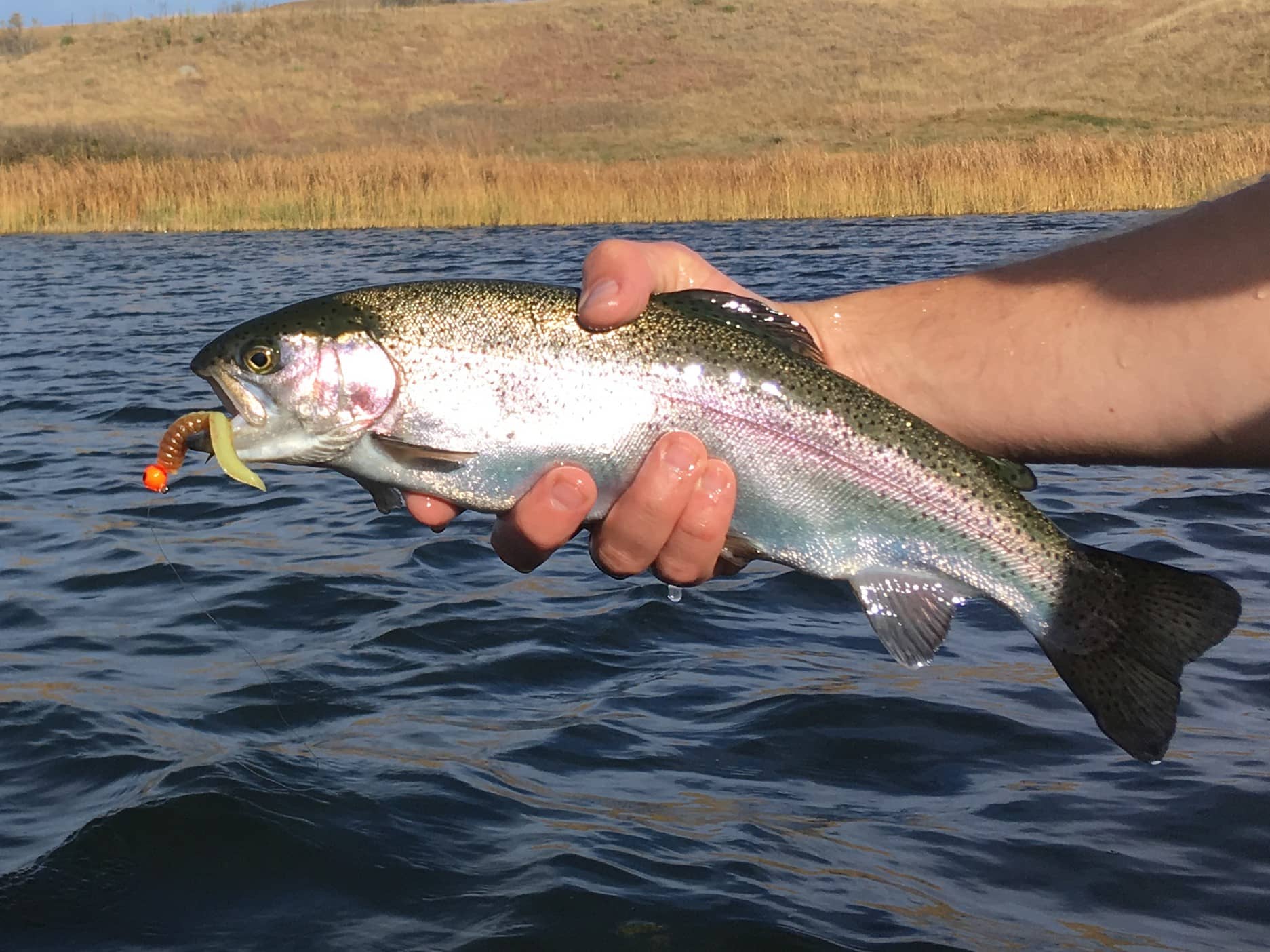
Old School. While jigs are what the author used to catch some of his first fall trout – and still work from time to time – other offerings like spoons and crankbaits along with bigger streamers on the fly rod, do a good job converting autumn rainbows. Simonson Photo.
By Nick Simonson
When I first discovered autumn trout fishing, I came home from school to visit my parents and saw three huge rainbows laying in their sink.
They were all 18 inches or better – with one over 20 inches – and a discovery my brother made on Moon Lake near my hometown of Valley City. My brother was making his way back upstairs after finding his filet knife in his room and explained the chance outing where he encountered them in the places we had caught perch and smallmouth bass, and how he had turned the first with a jig-and-twister combo, and was stunned when it came flashing by in a blur of blue and silver.
Following that discovery, we felt like fast fall trout fishing was a secret only we knew. The online postings of the time were limited, the Game & Fish Department’s website had no stocking data in those days (though I requested it via email the following week), and ultimately, a lot of folks just didn’t fish for trout and we were fine keeping it that way. While I’m sure a handful of other anglers knew of their presence in the 40-acre, crescent-shaped lake, there weren’t many that we saw out there and for a couple years, we did a good job of keeping things that way. Our close cadre did well in autumn’s chill bringing up fish that topped 21, 23, and even 24 inches in the cool weather seasons that followed.
Whether under the bluebird skies and light, warming southern breezes, or on a gray surface roiled by a stiff northwest wind, many early fall days were spent casting jigs, spoons, small crankbaits and more after the stocked fish. There was no offering that went unnoticed, as many casts brought a blue-green follow or a silver slash at boatside on whatever trout-type lure we threw at the stockers.
It began an autumn passion for me as these bigger fish moved back out of the depths where they had weathered summer’s heat into the naturally-cooling shallows as the days shortened, nights lengthened, and temperatures dropped in conjunction with the shifting of the seasons.
We’d burn our lures back fast fast, twitch them with a rip or a snap of the rod tip and the fish would respond excitedly, and that tactic – whether employed with plastics, spoons or hard baits and later on, fly patterns – has paid off in the two decades since that time. Keeping things big, fast and erratic has provided a strong start for stockers of all varieties in lakes deep enough to sustain them through the warm-water months.
In time, the addition of fluorocarbon leaders and a selection of confidence colors for these various lakes holding similar secret (and now, not-so-secret) populations of rainbows and browns, helped convert many short strikers and allowed for a more subtle way of getting our lures where they needed to be with the action required to connect.
Whether it was copper and red on a favorite western impoundment, orange and yellow in another, or silver, white or pink on the site of our first forays into fall trout in the waters of Moon Lake, with a little fine-tuning and tweaking, fall patterns came to be.
Finding those lakes deeper than 40 feet in the region where trout are stocked and making it a point to visit them all could fill up a decade’s worth of autumns. Likely though, the trout will be there as they were that first fall, when we started to figure things out. In this era of big data and instant information, it isn’t hard to find those locations and get a good idea where to begin either. After that, it takes a handful of spoons and other lures, a couple strands of clear line and a willingness to add a layer or two against the sometimes challenging elements of fall to find fast action for trout.
Consider tacking an hour or two of those casts on to a hunting outing, or take advantage of a warmer, calm afternoon to connect with these fish for a fulfilling autumn event that will likely become an annual tradition, as it has for me.
